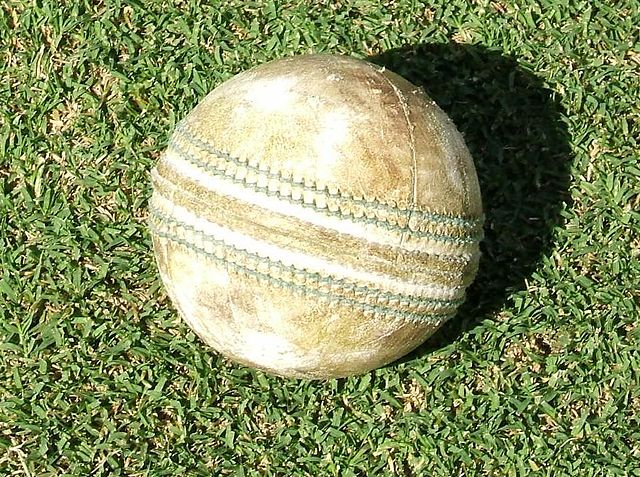A tape ball is a tennis ball wrapped in electrical tape that is often used in informal games of cricket such as street cricket, also called tape ball cricket.a First pioneered in Karachi, Pakistan, the tape ball acts as an improvised cricket ball with the tape stretched tightly over the fuzzy felt-like covering of a tennis ball to ensure a smooth surface that produces greater pace after bouncing. Although most street games feature entirely covered varieties, tape balls may also be prepared such that only one side is taped to replicate reverse swing or they may have multiple layers of tape running down the middle to mimic the leather seam found on standard cricket balls. Applying tape makes the ball heavier than a tennis ball, but not as hard or heavy as a cricket ball. As such, this modification seeks to reduce the risks to players, passers-by and property.
A tape ball (created by wrapping a tennis ball in electrical tape)
Tape ball traces its origins to residential Karachi streets, where youths played after school
Circumventing the need for facilities and equipment, tape ball has helped bring cricket to the masses
A cricket ball is a hard, solid ball used to play cricket. A cricket ball consists of a cork core wound with string then a leather cover stitched on, and manufacture is regulated by cricket law at first-class level. The trajectory of a cricket ball when bowled, through movement in the air, and off the ground, is influenced by the action of the bowler and the condition of the ball and the pitch, while working on the cricket ball to obtain optimal condition is a key role of the fielding side. The principal method through which the batter scores runs is by hitting the ball, with the bat, into a position where it would be safe to take a run, or by directing the ball through or over the boundary. Cricket balls are harder and heavier than baseballs.
A cricket ball
White balls are used in many limited overs cricket matches, especially those involving floodlights (day/night games). This is because a red ball under yellow lights takes on a brownish colour which is very similar to the colour of the pitch.
A pink cricket ball. Pink balls deteriorate more slowly than white balls, but have better night visibility than red balls, making them the most suitable ball for day-night Test cricket.
A used cricket ball







